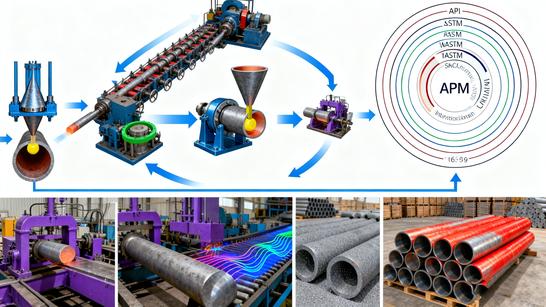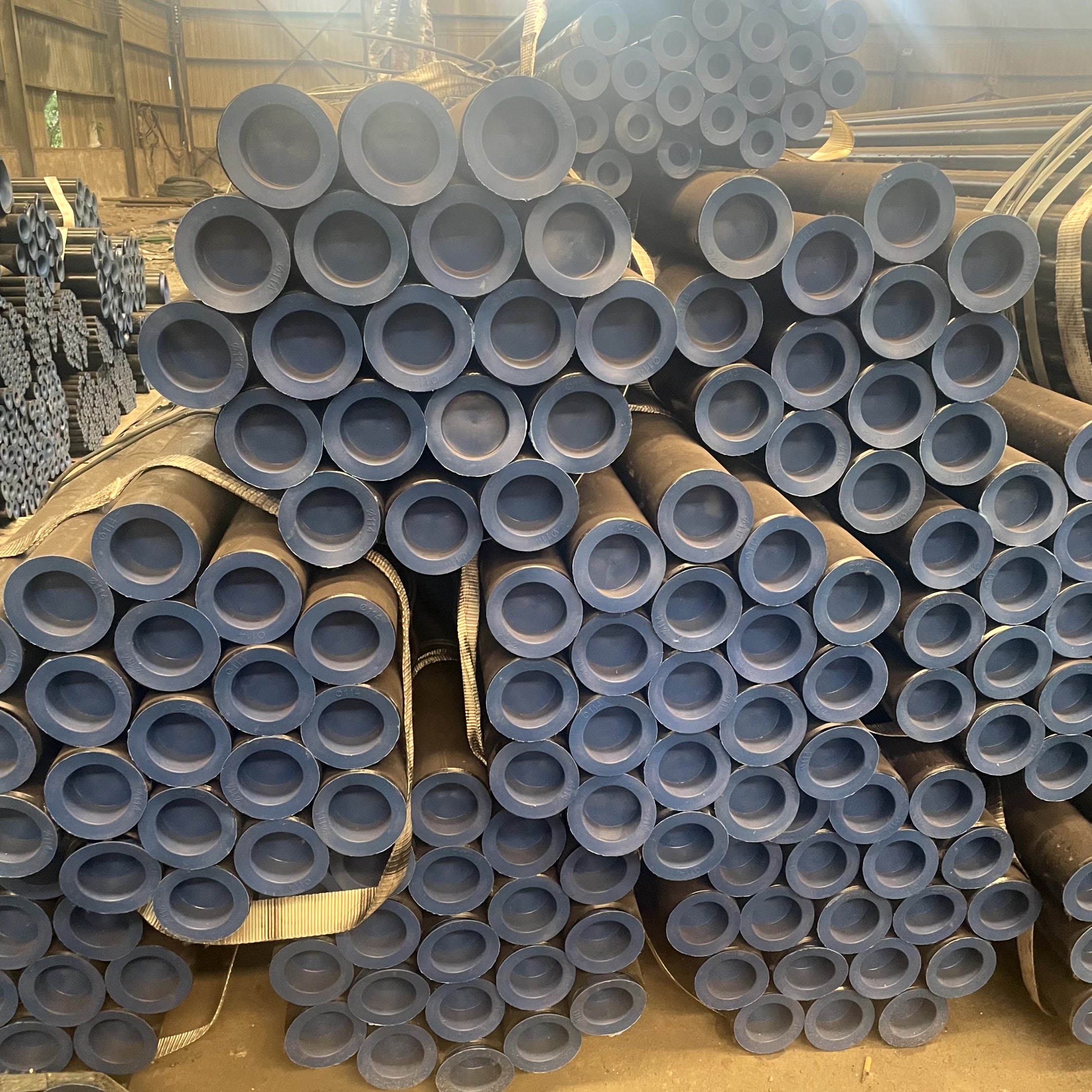In the oil and natural gas industry, pipelines are the arteries of energy transportation. The API 5L standard, developed by the American Petroleum Institute, is the global benchmark for line pipe used to convey natural gas, water, and oil.
API 5L covers various strength grades, ranging from Grade A up to Grade X80. More importantly, it uses Product Specification Levels (PSLs)—specifically PSL1 and PSL2—to define the stringency of the pipe's quality, inspection, and traceability. These PSLs determine whether the API 5L seamless pipe is suitable for standard or critical, high-risk projects.
For engineers and procurement specialists, understanding the distinctions between PSL1 and PSL2 is vital. This article details the key requirements, inspection items, and applicable industries for these two product specification levels.
1. API 5L Standard Overview: What is Line Pipe?
API 5L seamless pipe is specifically designed for transmission pipelines (line pipe), emphasizing high strength, excellent toughness, and resistance to extreme environments. While the standard covers both seamless and welded pipe, seamless pipe is often the preferred choice for the most demanding critical transport projects.
API 5L strength grades are denoted by the letter "X" followed by a number, such as X42, X52, or X65, where the number represents the steel's minimum yield strength in thousands of pounds per square inch (ksi).
2. Core Differences Between PSL1 and PSL2 Standards
PSL denotes additional quality requirements for API 5L pipe. Simply put, PSL2 is a higher, more stringent quality level than PSL1.
| Feature | API 5L PSL1 (Standard Level) | API 5L PSL2 (Advanced / Custom Level) |
| Application Risk | General purpose, non-sour service | Critical service, sour service, high toughness required |
| Traceability | Traceable to the heat number | Mandatory requirement for single-pipe traceability marking |
| Non-Destructive Testing (NDT) | No mandatory $100\%$ NDT requirement | Mandatory NDT for both pipe body and pipe ends |
| Low-Temp Impact Testing | Not mandatory | Mandatory Charpy Impact Testing |
| Chemical Composition | Restrictions are relatively relaxed | Restrictions are stricter (lower Carbon Equivalent, Sulfur, Phosphorus) |
| Hydrostatic Test | Permitted to be non-continuous (manufacturer's option) | Mandatory hydrostatic test on every single pipe |
3. PSL2's Critical Additional Requirements (The "Why" of PSL2)
PSL2 is considered the premium standard because it imposes higher demands on pipe performance in several key areas:
3.1. Mandatory Charpy Impact Testing
For transmission pipelines, especially those in cold regions or under high pressure, preventing rapid shear fracture is crucial. PSL2 mandates the Charpy V-notch impact test to ensure the material possesses adequate low-temperature toughness. PSL1 does not require this test.
3.2. Stricter Chemical Composition Control
PSL2 imposes tighter limits on the Carbon Equivalent (CEQ) and lower limits on Sulfur (S) and Phosphorus (P). A lower CEQ ensures better weldability, while lower S and P reduce non-metallic inclusions in the steel, thereby increasing its resistance to Hydrogen-Induced Cracking (HIC), making it suitable for Sour Service environments.
3.3. More Thorough Inspection Requirements
PSL2 mandates Non-Destructive Testing (NDT) on every single pipe to ensure the pipe body is free of surface or internal defects. Furthermore, PSL2 explicitly requires Magnetic Particle Inspection (MPI) or Liquid Penetrant Testing (LPT) on the pipe ends to detect manufacturing flaws.
4. Applicable Industries and Grade Classification
| Specification Level | Applicable Industries and Project Types | Common Strength Grades |
| PSL1 | Routine oil and gas transport, general fluid lines, non-critical structural projects. | Grade A, B, X42, X52 |
| PSL2 | Cross-country gas main lines, offshore pipelines, high-pressure/low-temperature regions, sour gas fields. | Grade B, X42, X52, X60, X65, X70, X80 |
5. Hebei Cangtie's Commitment to Quality
As a professional API 5L seamless pipe manufacturer, Hebei Cangtie supplies a full range of line pipe compliant with both PSL1 and PSL2 requirements. We understand that in critical energy projects, the high standards of PSL2 are a guarantee of safety and reliability. We strictly enforce $100\%$ NDT and low-temperature impact testing to ensure our seamless pipes perform exceptionally even under the most demanding conditions.
The choice between PSL1 and PSL2 is not merely a cost consideration, but a reflection of project risk levels and regulatory compliance. We are ready to provide technical consultation to help you select the most suitable line pipe grade.
Return to the Seamless Steel Pipe Master Guide for comprehensive information on seamless pipe standards, manufacturing processes, and applications.





